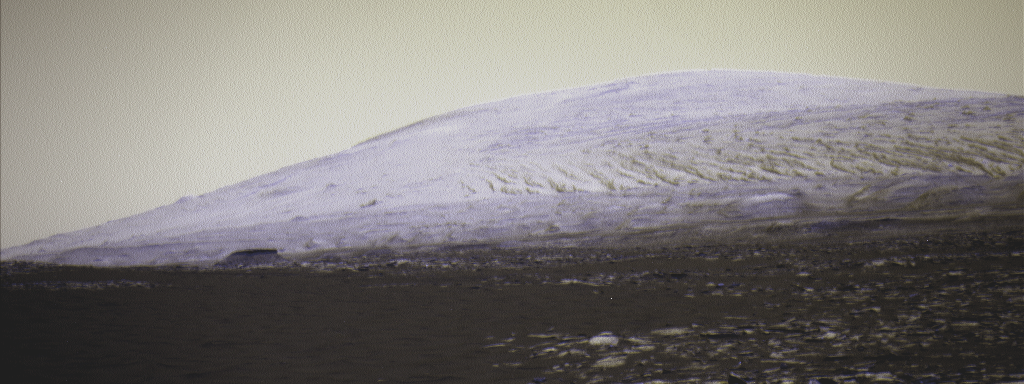It looks like you're using an Ad Blocker.
Please white-list or disable AboveTopSecret.com in your ad-blocking tool.
Thank you.
Some features of ATS will be disabled while you continue to use an ad-blocker.
share:
a reply to: dragonridr
If the temperature is high enough to melt the water it turns into vapor not liquid water because of the low pressure.
If the temperature is high enough to melt the water it turns into vapor not liquid water because of the low pressure.
originally posted by: LookingAtMars
a reply to: peter vlar
There is a big difference between a lake deep under Mars and an easily accessible glacier on the side of a mountain.
Please post a link to "publicizing evidence of liquid water" currently on Mars.
It sounds like some serious cognitive dissonance
Why would they want to hide that? You mentioned an "ice rush" in your opening post.
I don't think there is an ice shortage here on Earth. I highly doubt that NASA (or any other agency) is trying to conceal ice on Mars or any other space body because they want to hoard all the ice.
a reply to: KansasGirl
The US does not want to let others know an easy source of clean water is available. NASA spent a lot of time and money to gain it's info and will not just give it away, so that China, Russia, India and others can start making plans to set up a base on Mars. If the fact that Mars is more Earth like than we are told got out, a lot of countries would make plans to go there.
The US does not want to let others know an easy source of clean water is available. NASA spent a lot of time and money to gain it's info and will not just give it away, so that China, Russia, India and others can start making plans to set up a base on Mars. If the fact that Mars is more Earth like than we are told got out, a lot of countries would make plans to go there.
edit on 8-9-2018 by LookingAtMars because: (no reason given)
a reply to: LookingAtMars
If the fact that Mars is more Earth like than we are told got out, a lot of countries would make plans to go there.
Screw 'other countries'- How about us PEOPLE?! I don't know about anyone else, but I'm tired of the government hogging it all, and doling it out like rationed candy- mostly to its friends and the rich. Doesn't matter whose government, either. Yours, mine, someone else's.
The rest of us get the crumbs.
If the fact that Mars is more Earth like than we are told got out, a lot of countries would make plans to go there.
Screw 'other countries'- How about us PEOPLE?! I don't know about anyone else, but I'm tired of the government hogging it all, and doling it out like rationed candy- mostly to its friends and the rich. Doesn't matter whose government, either. Yours, mine, someone else's.
The rest of us get the crumbs.
originally posted by: LookingAtMars
Looking at images of Mount Sharp on Mars, I get the impression it has remains of a Glacier and maybe is covered with ice.
On a greyscale image white can be really any colour, it only means it was reflecting most of the light.
In this enhanced image it seems to be covered with ice.
Enhanced images can be made to look like almost any thing, that's why I prefer to look at the originals.
This images shows a much lighter colored section of the mountain that could be a glacier.
No, just lighter coloured ground, ice would be much more reflective.
Would NASA tell us if it was? I think not. Don't want to start a "ice rush" to Mars by other countries. Got to keep it secret so the US can build their base there. Right?
ESA has published photos of water ice many years ago, and they have also published what they think is the water circuit on Mars, with the water ice evaporating when the CO2 ice disappears from above the water ice layers, creating the clouds we sometimes see on photos and then moving to the opposite pole and fall back to the ground as snow or ice.
(I may be slightly wrong on the above, as I'm reproducing it from memory).
originally posted by: wylekat
NASA seems to like to shroud Mars in as much mystery as they possibly can. Look at that third image- Does it not look like pools of water in the near foreground? looks like a river in the middle, there as well.
No, it does not look like pools of water, as there are no reflections. Also, there's no signs of moisture on the edges. Besides that, close photos show that they are what they look like, "pool" of very fine sand.
And it looks like a river because once water flowed through there, that was one of the reasons that crater was chosen as the target for this mission, because in the past, water entering the crater from the north created Mount Sharp with the accumulation of sediment brought in the water.
Anyways, back to the 'water', or what looks an awful lot like water. Remember how long it took those supposed eggheads to admit that that one of the rovers was caked in good ol' mud, and stopped trying to blame it on some ridiculous 'chemical process'?
I don't remember that, could you give me a reference for it? Thanks in advance.
and look how long that EVERY Mars image was gonna be red- red sky, red ground, red everything, before they stopped doing that, and pictures come with that nice blueish sky, or at least as blue as you'd probably get?
I have seen red skies on Earth too, you just have to have some dust in the air for that to happen, so it's no surprise that the photos taken on Mars look reddish when we not compensate for the red tint provided by the dust in the air.
I have been posting photos of Mars where the sky appears between white to blue for many years, you just have to adjust them to compensate the red tint given by the dust in the air.
a reply to: LookingAtMars
You forgot about ESA, they have been talking and showing water ice on Mars for several years.
You forgot about ESA, they have been talking and showing water ice on Mars for several years.
a reply to: ArMaP
I don't remember that, could you give me a reference for it? Thanks in advance.
It was years ago, like early 2000-ish. I remember seeing the first pics, saying "oh, mud"- and hearing about some NASA scientists going on for something like a year about "bizarre chemical processes that looked like mud, but wasn't". Finally had to actually admit it was just plain MUD. I wish I could find an article going on about it.
I have seen red skies on Earth too, you just have to have some dust in the air for that to happen, so it's no surprise that the photos taken on Mars look reddish when we not compensate for the red tint provided by the dust in the air.
I have been posting photos of Mars where the sky appears between white to blue for many years, you just have to adjust them to compensate the red tint given by the dust in the air.
I have seen those pics as well. I also know that you cannot simply turn a naturally red sky blue, and expect it to look just as natural. However, the over tinted pics can be adjusted to good lifelike colors. Again, one who does photography and works in photo altering programs can end up telling by looking at the pic. I've been fiddling and screwing around with pictures for around 15 years, so I actually do have what could be called experience- just not the certified, diploma approved, college accredited experience. There's genuine, red, dusty images of Mars, and then, there's the for some obscure reason, the faked, red images of Mars. I can figure out which is which by pulling on 2 sliders in temperature and tint- then watching what besides the sky turns weird colors- like the dirt or various rocks. I start getting greenish Martian fields, it's naturally reddish skies. I get the slightly off red, more dirt colors, and some multicolored rocks in the mix, it's been tinted. Plus- just by looking at it, and the whole thing is this uniform *red* color is a strong indicator...
I don't remember that, could you give me a reference for it? Thanks in advance.
It was years ago, like early 2000-ish. I remember seeing the first pics, saying "oh, mud"- and hearing about some NASA scientists going on for something like a year about "bizarre chemical processes that looked like mud, but wasn't". Finally had to actually admit it was just plain MUD. I wish I could find an article going on about it.
I have seen red skies on Earth too, you just have to have some dust in the air for that to happen, so it's no surprise that the photos taken on Mars look reddish when we not compensate for the red tint provided by the dust in the air.
I have been posting photos of Mars where the sky appears between white to blue for many years, you just have to adjust them to compensate the red tint given by the dust in the air.
I have seen those pics as well. I also know that you cannot simply turn a naturally red sky blue, and expect it to look just as natural. However, the over tinted pics can be adjusted to good lifelike colors. Again, one who does photography and works in photo altering programs can end up telling by looking at the pic. I've been fiddling and screwing around with pictures for around 15 years, so I actually do have what could be called experience- just not the certified, diploma approved, college accredited experience. There's genuine, red, dusty images of Mars, and then, there's the for some obscure reason, the faked, red images of Mars. I can figure out which is which by pulling on 2 sliders in temperature and tint- then watching what besides the sky turns weird colors- like the dirt or various rocks. I start getting greenish Martian fields, it's naturally reddish skies. I get the slightly off red, more dirt colors, and some multicolored rocks in the mix, it's been tinted. Plus- just by looking at it, and the whole thing is this uniform *red* color is a strong indicator...
originally posted by: LookingAtMars
a reply to: wylekat
They make raw color image data hard for the average person to look at. They want you to see the pictures how they present them only.
Not true - anyone can download the raw images and do their own processing.
ode.rsl.wustl.edu...
NASA are not the only people researching Mars.
www.isro.gov.in...
As for the OP I think you're seeing a) different coloured surface material and b) what you want to see.
Doesn't look like ice to me at all, these are just lighter-coloured rocks and sediments. Mt Sharp is basically a huge sediment pile from the time Gale
crater was a lake (although there is a theory that it was formed by the wind).
You can find very high-rez, approximately-true-colour images of Mt Sharp on Google Earth and at HiRISE website.
Here's one such closeup of the "glacier":

We've had so many images of Mt Sharp from different angles and different resolutions, that it seems strange that you'd pick up on something unusual right now.
BTW, the temperatures in Gale crater have been exceeding 0 Celsius, so a glacier wouldn't last long even if it were there. Also, the dark bluish looking areas are just basaltic sand.
To say that NASA would be hiding something from the public about space does disservice to all the scientists and engineers who work hard on these space missions.
You can find very high-rez, approximately-true-colour images of Mt Sharp on Google Earth and at HiRISE website.
Here's one such closeup of the "glacier":

We've had so many images of Mt Sharp from different angles and different resolutions, that it seems strange that you'd pick up on something unusual right now.
BTW, the temperatures in Gale crater have been exceeding 0 Celsius, so a glacier wouldn't last long even if it were there. Also, the dark bluish looking areas are just basaltic sand.
To say that NASA would be hiding something from the public about space does disservice to all the scientists and engineers who work hard on these space missions.
edit on 9-9-2018 by wildespace because: (no reason given)
originally posted by: wylekat
Now, your fourth image.. it looks just like any mud flats I've seen.. and so help me- what looks like an astronaut walking down the hill up in the top right hand corner. It's more than likely Pareidolia- but good grief, he's detailed. I can see helmet, backpack... something that looks like an upside down V vest...
Look at the full size photo.

photojournal.jpl.nasa.gov...
As an example of how a reddish photo can have blue skies, just look at this case.
This is the original photo, taken on the same day as the photo from the opening post.
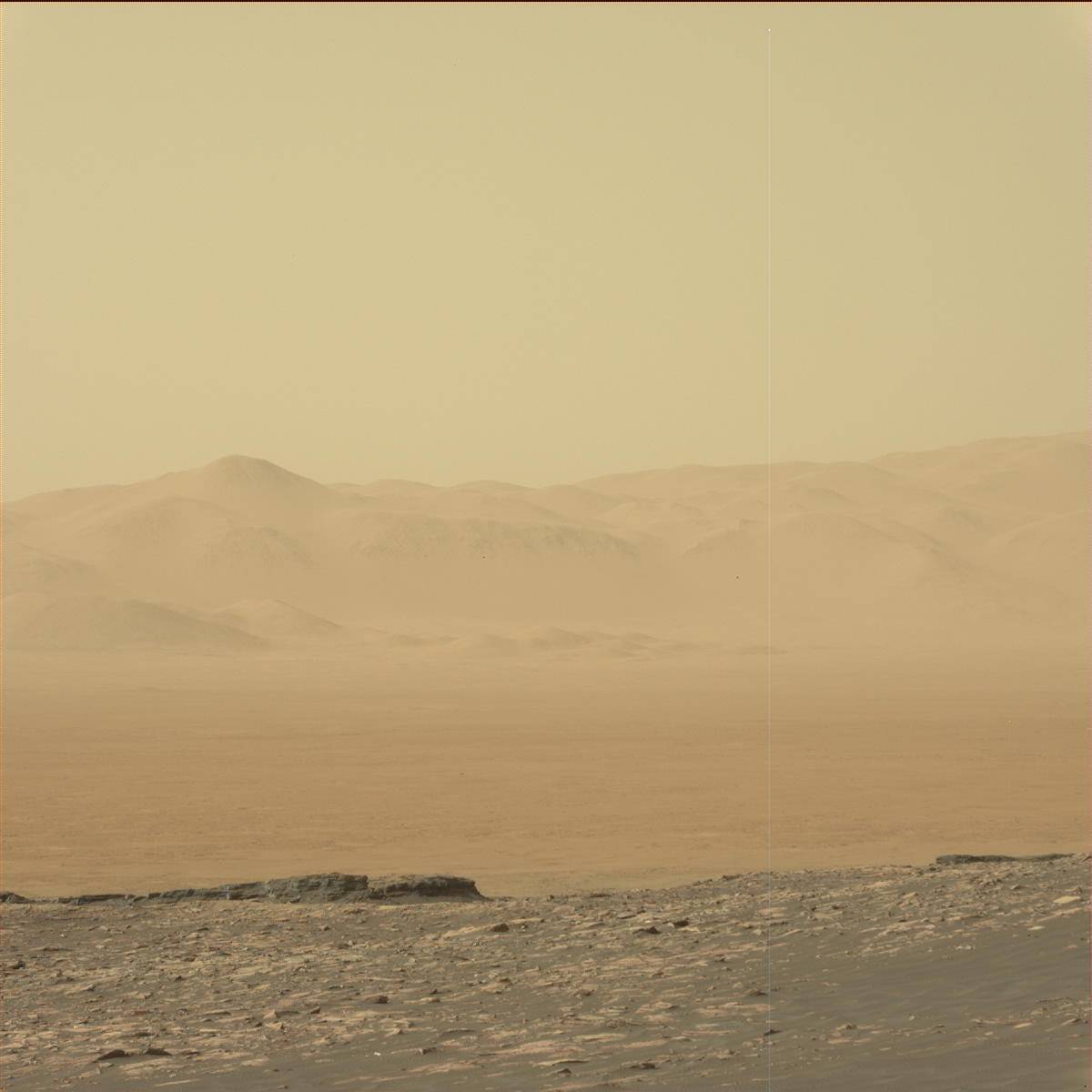
This is after I adjusted it manually.

This is after the automatic adjustment made by Gimp.

As an example of the same thing on Earth, here is a photo from a dust storm that affected Sydney 9 years ago. As you can see, the effect is much worse than what we see on Mars, probably because the denser atmosphere makes it possible for larger dust particles to stay in the air for much longer.
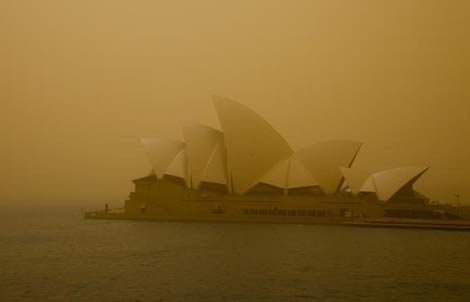
And after being adjusted.
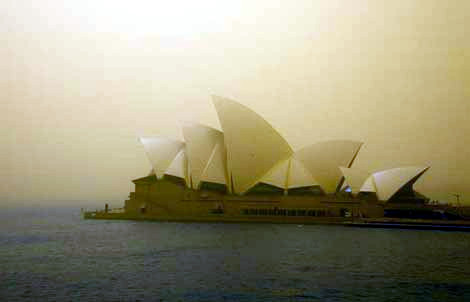
edit on 9/9/2018 by ArMaP because: removed an extra "a" and added a missing "c".
originally posted by: OneBigMonkeyToo
originally posted by: LookingAtMars
a reply to: wylekat
They make raw color image data hard for the average person to look at. They want you to see the pictures how they present them only.
Not true - anyone can download the raw images and do their own processing.
ode.rsl.wustl.edu...
NASA are not the only people researching Mars.
www.isro.gov.in...
As for the OP I think you're seeing a) different coloured surface material and b) what you want to see.
Have you ever tried to download a MEX (for example) EDR and open it? I have, and can. First you have to download ISIS and set it up (used to be had to use LINUX). The ISIS download with data is like 100 gigs. Believe me the average person can not open an EDR.
Link to images opened in ISIS.
edit on 9-9-2018 by LookingAtMars because: (no reason given)
a reply to: ArMaP
Why is that image so much brighter than the rest of the image. I am putting forth that is because it is ice. Not saying without a doubt, just it could be. Why do you think it is so much brighter?
I have been working with Mars images before the turn of the century. I know for a fact NASA holds back info.
On a greyscale image white can be really any colour, it only means it was reflecting most of the light.
Why is that image so much brighter than the rest of the image. I am putting forth that is because it is ice. Not saying without a doubt, just it could be. Why do you think it is so much brighter?
I have been working with Mars images before the turn of the century. I know for a fact NASA holds back info.
a reply to: wildespace
Glad to see you are so informed and because it doesn't look like ice to you it must not be. Mars has dust that covers almost everything. Glad you know for a fact it is "just lighter-coloured rocks and sediments". It seems you don't even know what NASA says it is.
Doesn't look like ice to me at all, these are just lighter-coloured rocks and sediments.
Glad to see you are so informed and because it doesn't look like ice to you it must not be. Mars has dust that covers almost everything. Glad you know for a fact it is "just lighter-coloured rocks and sediments". It seems you don't even know what NASA says it is.
originally posted by: LookingAtMars
a reply to: ArMaP
On a greyscale image white can be really any colour, it only means it was reflecting most of the light.
Why is that image so much brighter than the rest of the image.
The navcam images have a really strong contrast and seemingly low dynamic range. Navcam's whole purpose is to help the rover navigate the terrain, not for science purposes.
Re: your reply to me, what does it matter if the image I posted is not raw? It's still a truthful orbital image. ESA's Mars Express Orbiter images don't show any ice: www.planetary.org... and neither does the Indian orbiter image: planetary.s3.amazonaws.com...
If there were a whole lot of ice on Mt Sharp, it would have been noticed a long time ago, and not just by NASA.
originally posted by: LookingAtMars
Have you ever tried to download a MEX (for example) EDR and open it? I have, and can. First you have to download ISIS and set it up (used to be had to use LINUX). The ISIS download with data is like 100 gigs. Believe me the average person can not open an EDR.
Link to images opened in ISIS.
That's not the point.
The point is that is not impossible for people to do it - the data are there and people can access them. The tools to process the data are freely available. Difficult is not impossible. The fact the it may be beyond some people's skills set is not the same as impossible.
a reply to: ArMaP
ESA, LOL, NASA is much more open with their data than ESA. ESA can take years before they release their raw data.
You forgot about ESA, they have been talking and showing water ice on Mars for several years.
ESA, LOL, NASA is much more open with their data than ESA. ESA can take years before they release their raw data.
edit on 9-9-2018 by LookingAtMars because: (no reason given)
a reply to: OneBigMonkeyToo
I didn't say it was impossible! I said they make it HARD!
The point is that is not impossible for people to do it - the data are there and people can access them. The tools to process the data are freely available. Difficult is not impossible.
I didn't say it was impossible! I said they make it HARD!
originally posted by: LookingAtMars
a reply to: wildespace
Doesn't look like ice to me at all, these are just lighter-coloured rocks and sediments.
Glad to see you are so informed and because it doesn't look like ice to you it must not be. Mars has dust that covers almost everything. Glad you know for a fact it is "just lighter-coloured rocks and sediments". It seems you don't even know what NASA says it is.
It's a case of pot calling kettle black here, since all you're saying is "it looks like ice to me, because that area looks brighter than the rest."
Mars has plenty of frozen CO2 in the polar regions, and it's not entirely covered in dust. Why would the Gale crater "glacier" be? With CO2 ice, there are seasonal changes and sublimation events that produce dark spikes and other features. We don't see anything like that on Mt Sharp.
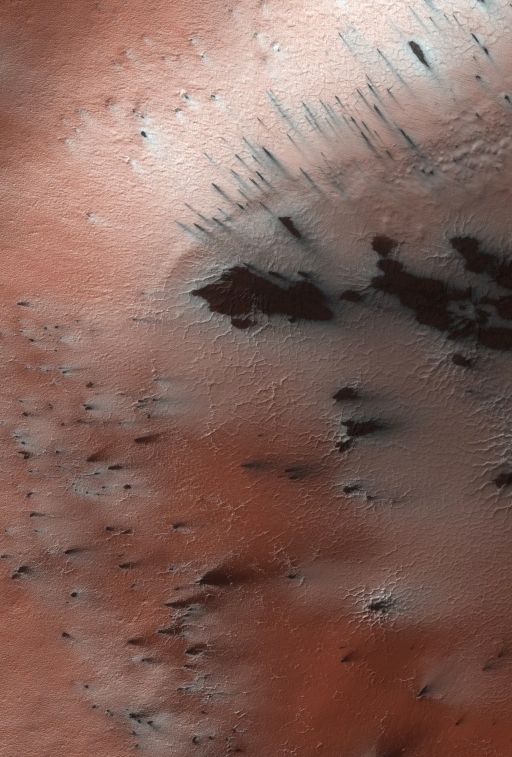
P.S. NASA has found many glaciers on Mars, so it's not like they're trying to keep them secret: en.wikipedia.org...
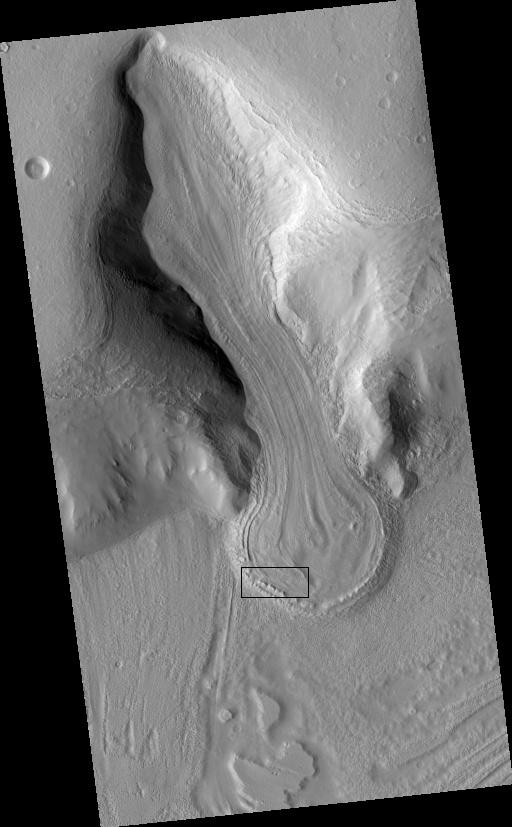
edit on 9-9-2018 by wildespace because: (no reason given)
new topics
-
President BIDEN's FBI Raided Donald Trump's Florida Home for OBAMA-NORTH KOREA Documents.
Political Conspiracies: 3 hours ago -
Maestro Benedetto
Literature: 4 hours ago -
Is AI Better Than the Hollywood Elite?
Movies: 4 hours ago -
Las Vegas UFO Spotting Teen Traumatized by Demon Creature in Backyard
Aliens and UFOs: 8 hours ago -
2024 Pigeon Forge Rod Run - On the Strip (Video made for you)
Automotive Discussion: 9 hours ago -
Gaza Terrorists Attack US Humanitarian Pier During Construction
Middle East Issues: 9 hours ago -
The functionality of boldening and italics is clunky and no post char limit warning?
ATS Freshman's Forum: 10 hours ago -
Meadows, Giuliani Among 11 Indicted in Arizona in Latest 2020 Election Subversion Case
Mainstream News: 11 hours ago -
Massachusetts Drag Queen Leads Young Kids in Free Palestine Chant
Social Issues and Civil Unrest: 11 hours ago
top topics
-
President BIDEN's FBI Raided Donald Trump's Florida Home for OBAMA-NORTH KOREA Documents.
Political Conspiracies: 3 hours ago, 23 flags -
Krystalnacht on today's most elite Universities?
Social Issues and Civil Unrest: 14 hours ago, 9 flags -
University of Texas Instantly Shuts Down Anti Israel Protests
Education and Media: 17 hours ago, 8 flags -
Weinstein's conviction overturned
Mainstream News: 12 hours ago, 8 flags -
Supreme Court Oral Arguments 4.25.2024 - Are PRESIDENTS IMMUNE From Later Being Prosecuted.
Above Politics: 14 hours ago, 8 flags -
Massachusetts Drag Queen Leads Young Kids in Free Palestine Chant
Social Issues and Civil Unrest: 11 hours ago, 7 flags -
Gaza Terrorists Attack US Humanitarian Pier During Construction
Middle East Issues: 9 hours ago, 7 flags -
Las Vegas UFO Spotting Teen Traumatized by Demon Creature in Backyard
Aliens and UFOs: 8 hours ago, 6 flags -
Meadows, Giuliani Among 11 Indicted in Arizona in Latest 2020 Election Subversion Case
Mainstream News: 11 hours ago, 5 flags -
2024 Pigeon Forge Rod Run - On the Strip (Video made for you)
Automotive Discussion: 9 hours ago, 4 flags
active topics
-
University of Texas Instantly Shuts Down Anti Israel Protests
Education and Media • 265 • : Astrocometus -
Gaza Terrorists Attack US Humanitarian Pier During Construction
Middle East Issues • 27 • : ToneD -
-@TH3WH17ERABB17- -Q- ---TIME TO SHOW THE WORLD--- -Part- --44--
Dissecting Disinformation • 688 • : daskakik -
Reason of the Existence
The Gray Area • 21 • : BingoMcGoof -
President BIDEN's FBI Raided Donald Trump's Florida Home for OBAMA-NORTH KOREA Documents.
Political Conspiracies • 10 • : nugget1 -
Supreme Court Oral Arguments 4.25.2024 - Are PRESIDENTS IMMUNE From Later Being Prosecuted.
Above Politics • 85 • : Sookiechacha -
Chris Christie Wishes Death Upon Trump and Ramaswamy
Politicians & People • 24 • : nugget1 -
New whistleblower Jason Sands speaks on Twitter Spaces last night.
Aliens and UFOs • 63 • : pianopraze -
SETI chief says US has no evidence for alien technology. 'And we never have'
Aliens and UFOs • 74 • : Justoneman -
Starburst galaxy M82 - Webb Vs Hubble
Space Exploration • 6 • : Arbitrageur

